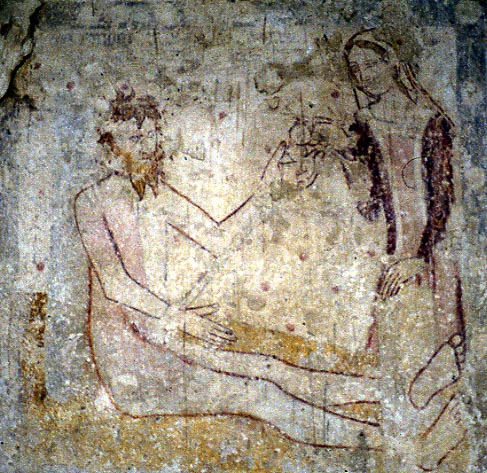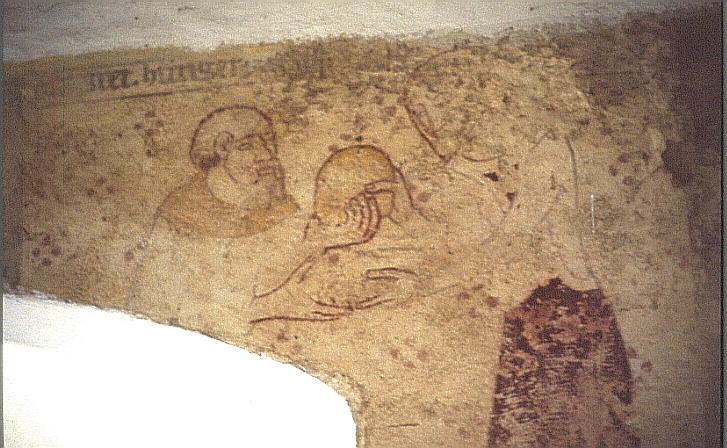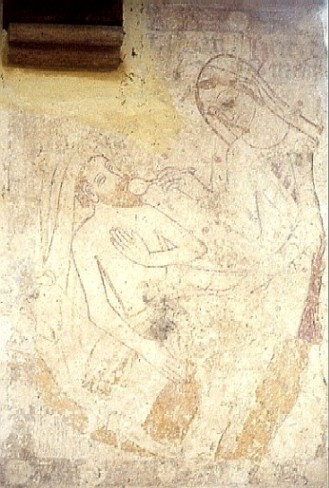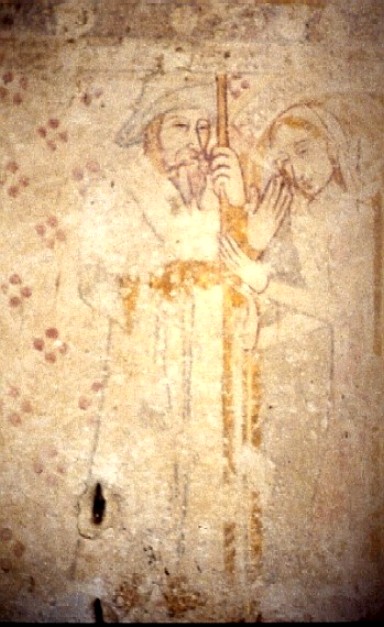Potter Heigham, Norfolk (†Norwich) C.14
The Seven Works of Mercy

The Seven Works in the south aisle at Potter Heigham is faded now. But, like others in this Norfolk group (e.g. Moulton St Mary, Wickhampton) this is high-quality work of great interest At the left is one of the clearest scenes, Visiting the Prisoner, and the Works are performed by a woman in 14th century costume who stands at the right, offering something – it is impossible now to say what – to a male prisoner with a forked beard very typical of the period of the painting. His hands are manacled and the wrist-fastenings and central bar of the manacles can still just be seen; the similar shackle on his feet is faintly visible in the original in good light and a hint of it shows here.
Below is Feeding the Hungry, a clear scene in which even some of the inscription, in particular the word ‘hunger’ above the painting can be read. The same woman hands a round loaf of bread (some other item in her left hand is unclear) to a bald or possibly tonsured man. Like all the men in this painting, he has a short forked beard. Two more scenes are below – at the left, Tending the Sick, where the ministering woman feeds a man lying in bed from a bowl with a spoon. The bed has what seems to be a striped cover, and the sick man’s head is carefully draped with cloth, perhaps indicating efforts to cool a fever. and at the right Receiving the Stranger who is dressed as a pilgrim with wide-brimmed hat and staff.

The inscription here is harder to read, but it is visible and one word – perhaps ‘them’ or ‘their’ is clear. Whatever it is, it is safe to say that the inscription is based, however loosely, on the last part of the Olivet discourse in Matthew 25, and it is significant that although the painting was made no later than the early fifteenth century, the inscriptions are in English and not Latin.

Potter Heigham, like Little Horwood, is dedicated to St Nicholas, and part of his story is also painted here in the north aisle, along with an Infancy Cycle where Herod’s brutality is shown in contrast to Nicholas’s miraculous merciful intervention on behalf of the three boys.

These paintings may be earlier than the Works of Mercy, and they are faded and fragmentary, but I will try to include some of them in these pages.
There is also a good 15th century screen at Potter Heigham and an unusual brick and pottery font from the same period, evidence of the local industry which gave Potter Heigham its name.